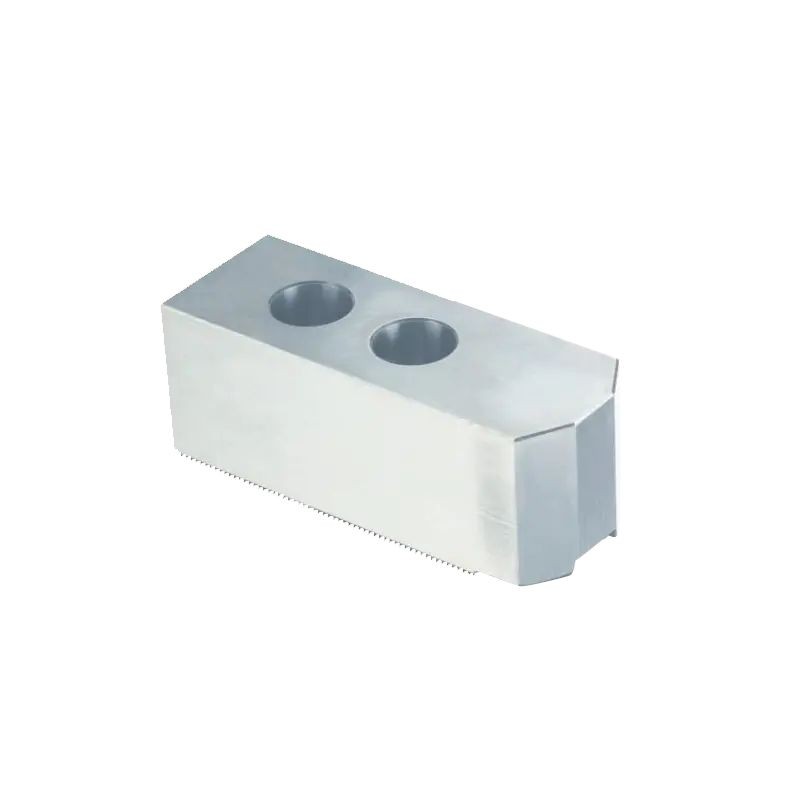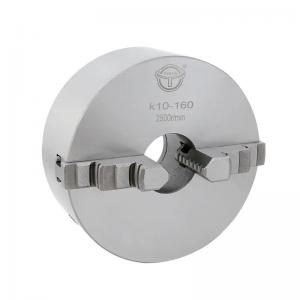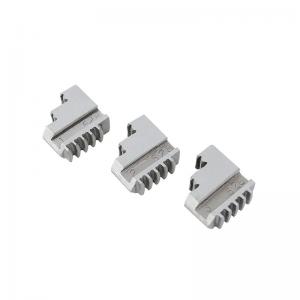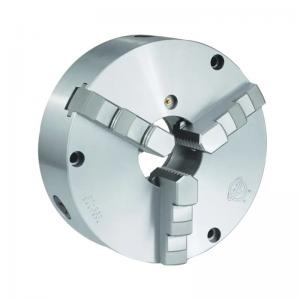Soft top jaws (Type A)
- Category: Soft Jaw
- Product description:Wholesale Soft Top Jaws Company has an OEM Cheap High Quality Vice Soft Jaws, Chuck jaws play a crucial role in securely gripping and holding workpieces during machining operations, soft top jaws stan

|
Size |
L |
L1 |
B |
H |
a |
b |
e |
d |
d1 |
|
250 |
110 |
50 |
36 |
63 |
19.025 |
12.7 |
27 |
13 |
20 |
|
315 |
120 |
57 |
45 |
70 |
19.025 |
12.7 |
31.75 |
13 |
20 |
|
400 |
135 |
67 |
45 |
85 |
19.025 |
12.7 |
38.1 |
18 |
26 |
How Do Soft Top Jaws Contribute To Improved Gripping Of Irregularly Shaped Workpieces?
Chuck jaws play a crucial role in securely gripping and holding workpieces during machining operations. When it comes to irregularly shaped workpieces, soft top jaws stand out as a valuable tool for ensuring a secure grip and reliable hold.
(1)Accommodating Irregular Shapes
Irregularly shaped workpieces pose a challenge in achieving a secure grip using traditional chuck jaws. Soft top jaws, on the other hand, are specifically designed to adapt to the contours and irregularities of workpieces. Their flexible and deformable nature allows them to conform to the shape of the workpiece, ensuring maximum contact and improved gripping performance. This adaptability is particularly beneficial when dealing with complex geometries, asymmetrical components, or custom-shaped parts.
(2)Gentle Clamping for Delicate Materials
Soft top jaws excel at securely holding delicate or easily marred materials. Unlike hard jaws that exert high clamping forces, soft top jaws provide a gentler and more evenly distributed clamping pressure. This characteristic minimizes the risk of distortion, surface damage, or deformation on sensitive materials such as plastics, composites, or thin-walled components. The ability to provide a secure grip without compromising the integrity of delicate workpieces is a significant advantage of soft top jaws.
(3)Customizable and Versatile Designs
Soft top jaws offer a high level of versatility and customization to accommodate various irregularly shaped workpieces. They can be machined or modified to match the specific contours, profiles, or features of the workpiece. This customization ensures optimal contact and gripping performance, even for the most intricate or challenging shapes. Soft top jaws can be adapted to suit a wide range of industries and applications, including automotive, aerospace, medical devices, and electronics.
(4)Material Selection for Optimal Performance
The choice of materials for soft top jaws is critical to their gripping and holding performance. Common materials used for soft top jaws include aluminum, brass, and soft steel. These materials possess the necessary flexibility and deformability to conform to irregular shapes while maintaining sufficient strength and durability. The selection of materials depends on factors such as the specific application, workpiece material, and required clamping forces.
(5)Enhanced Stability and Reduced Vibrations
Irregularly shaped workpieces often pose challenges in terms of stability and vibrations during machining operations. Soft top jaws contribute to improved stability by conforming closely to the workpiece shape, minimizing any potential movement or slippage. This stability not only ensures accurate machining but also reduces vibrations, enhancing the quality of the finished product. By reducing vibrations, soft top jaws help extend tool life, improve surface finish, and promote overall machining efficiency.
(6)Reducing Jaw Marks and Imprints
When gripping irregularly shaped workpieces, the risk of jaw marks or imprints is a common concern. Soft top jaws address this issue by distributing the clamping forces more evenly across the workpiece surface. The softer, non-abrasive materials used in soft top jaws reduce the likelihood of leaving visible marks or imprints on the workpiece. This is particularly crucial for aesthetic components or parts that require a pristine surface finish.
By embracing the advantages of soft top jaws, manufacturers can overcome the challenges associated with irregular shapes, expand their capabilities, and achieve superior machining outcomes in various industries and applications.
INQUIRY
CATEGORIES
LATEST NEWS
CONTACT US
Name:
phone:+86-576-82356788
Whatsapp:8657682356788
Email:tp@tpchuck.com
Add:Luqiao District, Taizhou City, Zhejiang Province, China.





